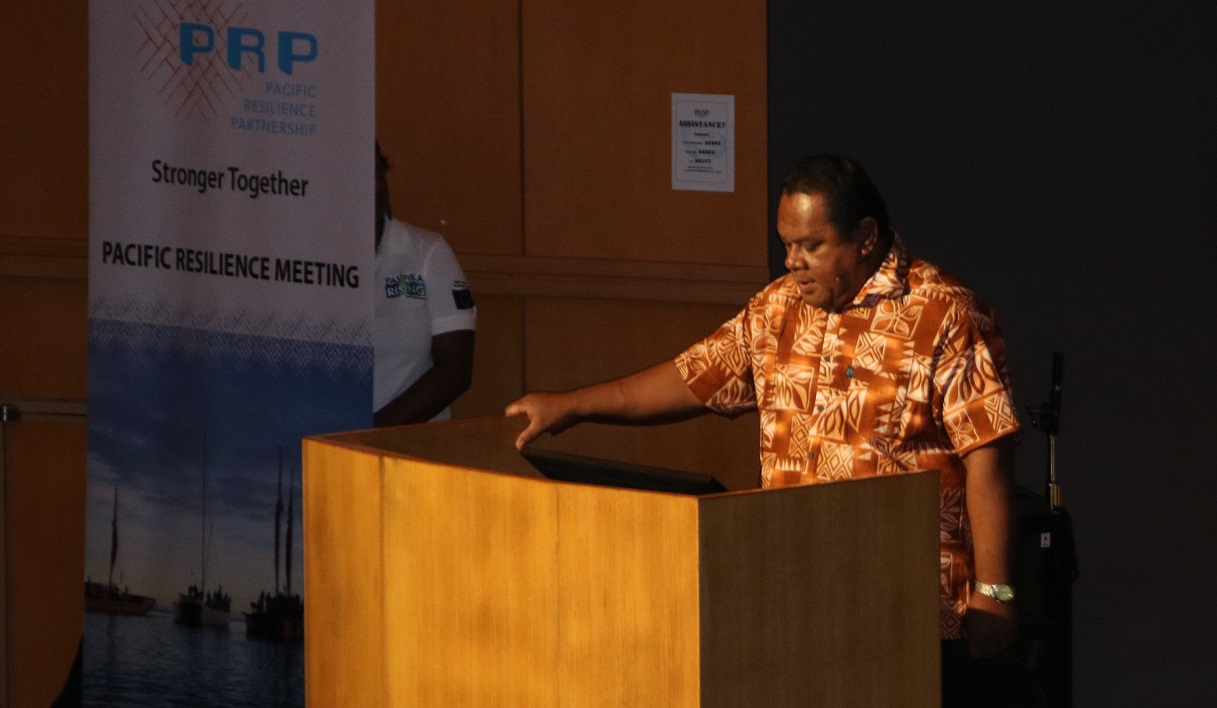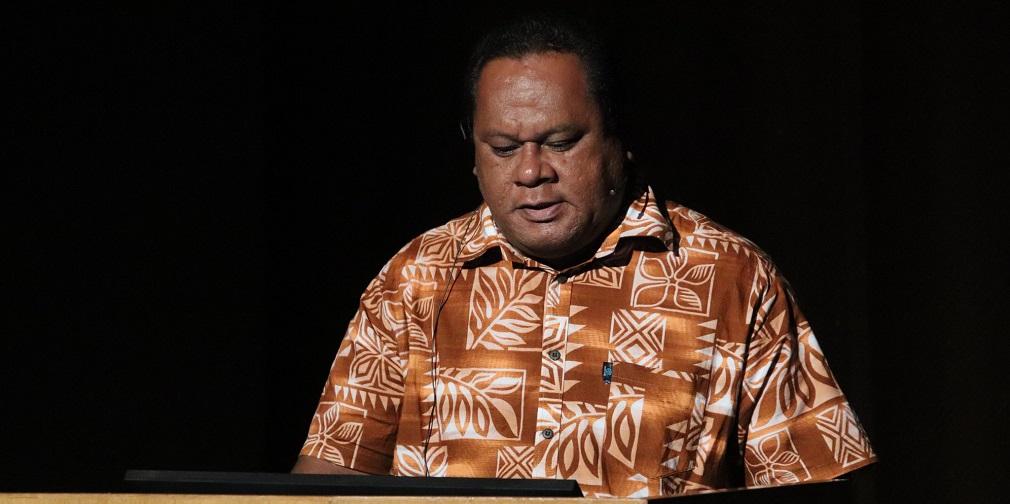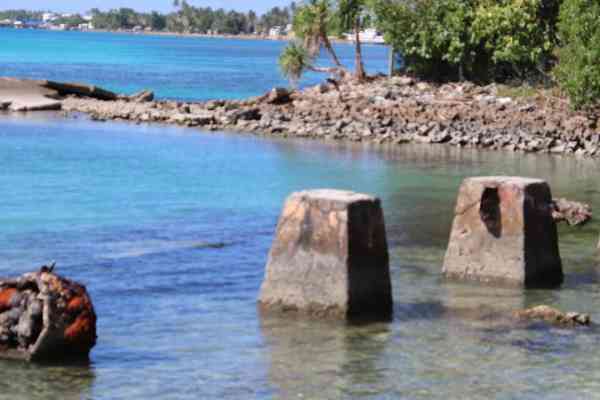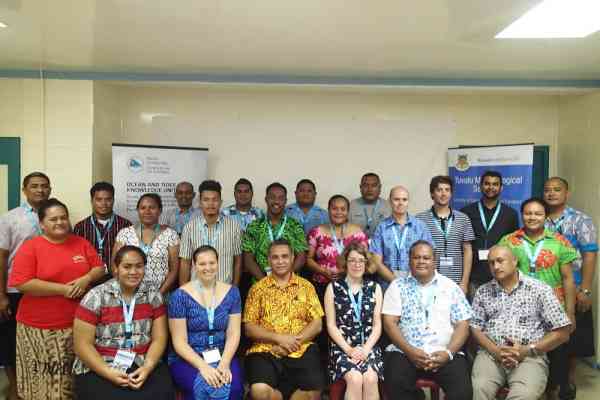“Tropical Cyclone Pam largely affected Vanuatu which was more than 1000 KM away from Tuvalu, and yet our islands were flooded by the massive waves the cyclone generated,” Tauala Katea Director for Tuvalu Meteorological Services shared with participants at the Pacific Resilience Meeting underway in Suva.
Tuvalu is a nation of nice, small low-lying atoll and reef Islands with none more than a few metres above sea level making it highly exposed to the surrounding ocean. One of the most concerning challenges faced is coastal inundation or flooding from large waves, extreme king tides, and even monthly spring tides.
Tauala: The intrusion of seawater into taro pits and garden beds affects agriculture and limits our ability to grow many kinds of foods and plants. Coastal flooding also has a huge impact on our homes, roads, infrastructure and the daily lives and safety of Tuvaluans. There was a time when these events were difficult to predict and not well understood. Tuvaluans could not understand why this sudden flooding would occur in places that rarely flooded before. Or why our shorelines were becoming narrower due to coastal erosion.
Addressing the problem

Because the global forecast system did not pick up waves around small Islands and in this case generated by TC Pam heading towards Tuvalu, the need for a downscaled offshore wave-forecasting model was identified with advice from the Pacific Community (SPC) funded by Kreditanstalt für Wiederaufbau (KFW) project and WMO funded Climate Risk and Early Warning Systems (CREWS).
Scientists from the Geoscience, Energy and Maritime Programme worked alongside the Tuvalu Government and the Meteorological Services to develop a downscaled model. The downscaled models and system extracts anomalies and tides for all nine atolls making specific forecast products possible.
Tauala: We have come a long way thanks to the investment and contributions by Tuvalu government, donors, and technical partners into ocean monitoring and ocean services at Tuvalu Meteorological Service. While these models will not prevent inundation events, it will help us generate forecasts and issue this to local authorities and communities prepare and if needed evacuate certain areas to prevent loss of property and loss of life.
The Australian funded Climate and Ocean Support Program in the Pacific (COSPPac) of which SPC is an implementing partner, continues to work extensively with the Tuvalu Meteorological Services.
Tauala: We receive COSPPac Annual Tide Prediction Calendars and we have been able to provide Tuvaluans with accurate warnings for the times of spring tides and king tides over the radio and through email warnings and bulletins.
Through the Pacific Sea Level and Geodetic Monitoring Project, a state of the art tide gauge was installed, that allows the collection of high quality, local sea level data to continue in Tuvalu.
Tauala: The sea level and weather information from this station is available in near-real time via an online link, which has been very useful for Tuvalu Met Service as well as our Fisheries and Maritime users.
A collaborative approach
The Pacific Community continues to work in the region providing scientific and technical support, contributing toward a resilient Pacific.
The Director for the Geoscience, Energy and Maritime Division Dr Andrew Jones says that SPC provides a whole suite of expertise across the various development areas to challenges faced by the region.
Dr Jones: Science is critical and while it is important to understand this, we also must know that science can help us with the solutions, model future scenarios and help people understand the adaptation strategies that they are planning. The work we have been able to do with the Tuvalu Government and the Meteorological Services is a great example of how targeted investment in technology and capacity building can build resilient communities and countries.
_____
The Inaugural Pacific Resilience Meeting (PRM) is being held at the University of the South Pacific, Suva, Fiji from 1 to 3 May 2019. The PRM brings together the Pacific Climate Change Roundtable, the Pacific Platform for Disaster Risk Management, the low carbon development community of practice, the Pacific Humanitarian Partnership and the European Union Global Climate Change Alliance Plus Initiative (GCCA+).
Themed Youth Futures in a Resilient Pacific, the PRM is a multi-sectoral, multi-stakeholder meeting that will take stock of progress and review and strengthen operational processes relating to the implementation of the three goals of the Framework for Resilient Development in the Pacific (FRDP).


